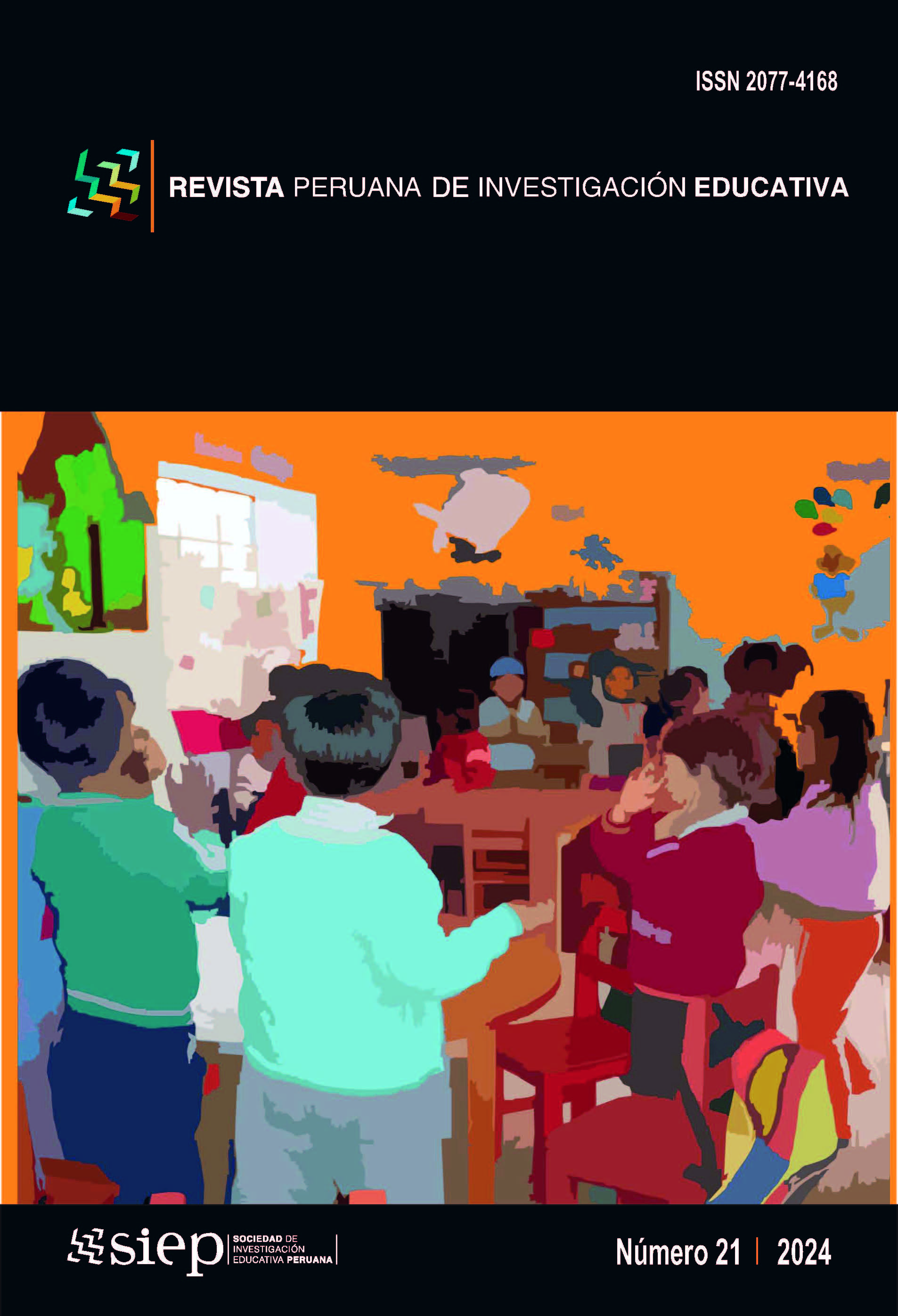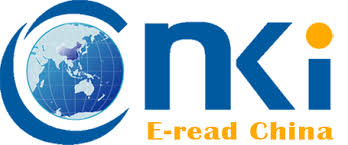Desempeños diferenciados en una evaluación de matemáticas en Perú: entorno local y abstracción en escuelas rurales
DOI:
https://doi.org/10.34236/rpie.v16i21.487Palabras clave:
Evaluación de estudiantes, Análisis comparativo, Diferencias sociales, Escuela ruralResumen
Este artículo presenta un estudio exploratorio que se enfoca en identificar posibles factores que deben ser tomados en cuenta para explicar diferencias de desempeño entre zonas urbanas y rurales en las evaluaciones estandarizadas de matemáticas en sexto grado de primaria.
Los resultados sugieren que diferencias en la riqueza letrada y la demanda cognitiva presente en cada entorno, incluyendo las diferencias en la dotación de docentes, deberían ser tomadas en cuenta para entender las diferencias en desempeño en desmedro de la población rural. Esto resulta particularmente relevante en el caso de las preguntas que suponen la ejecución de operaciones con mayor nivel de abstracción.
Estas diferencias sugieren que hay dinámicas diferenciadas en los procesos de enseñanza-aprendizaje y en la relación de éstos con el entorno local que deben ser tomadas en cuenta para desarrollar acciones de mejora educativa.
Citas
Baker, F. B. (2001). The basics of item response theory (2a. Ed.). ERIC Clearinghouse on Assessment and Evaluation.
Barca, L., Binkofski, F., Castelfranchi, C., Pezzulo, G., Tummolini, L., y Borghi, A. M. (2019). Words as social tools: Language, sociality and inner grounding in abstract concepts. Physics of Life Reviews, 29, 120–153. https://linkinghub.elsevier.com/retrieve/pii/S1571064518301271
Bernstein, B. (1990). The structuring of pedagogic discourse. Routledge.
Bieber, T., Martens, K., Newmann, D., y Teltemann, J. (2015). Towards a global model in education? International student literacy assessments and their impact on policies and institutions. En M. Hamilton, B. Maddox, y C. Addey (Eds.), Literacy as Numbers: Researching the Politics and Practices of International Literacy Assessment Regimes (pp. 165–186). Cambridge University Press.
Borghi, A. M. (2022). Concepts for Which We Need Others More: The Case of Abstract Concepts. Current Directions in Psychological Science, 31(3), 238–246. SAGE Publications Inc. https://doi.org/10.1177/09637214221079625
Borghi, A. M. (2023). The Freedom of Words: Abstractness and the Power of Language. Cambridge: Cambridge University Press.
Borghi, A. M., y Tummolini, L. (2020). Touch me if you can: The intangible but grounded nature of abstract concepts. Behavioral and Brain Sciences, 43, e123. Cambridge University Press. https://www.cambridge.org/core/journals/behavioral-and-brain-sciences/article/abs/touch-me-if-you-can-the-intangible-but-grounded-nature-of-abstract-concepts/8B564BE2696574E688CA701B8ED697F1
Bourdieu, P. (1997). Capital cultural, escuela y espacio social. Siglo XXI.
Bourdieu, P., y Passeron, J.-C. (2000). Reproduction in Education, Society and Culture (2a. Ed.). Thousand Oaks, New Delhi: Sage.
Bratsberg, B., y Rogeberg, O. (2018). Flynn effect and its reversal are both environmentally caused. Proceedings of the National Academy of Sciences of the United States of America, 115(26), 6674–6678. National Academy of Sciences. http://www.ncbi.nlm.nih.gov/pubmed/29891660
Coleman, J. S., Campbell, E. Q., Hobson, C. J., McPartland, J., Mood, A. M., Weinfeld, F. D., y York, R. L. (1966). Equality of educational opportunity. US Government Printing Office.
Cooper, B., y Dunne, M. (1998). Anyone for Tennis? Social Class Differences in Children’s Responses to National Curriculum Mathematics Testing. The Sociological Review, 46(1), 115–148.
Cooper, B., y Dunne, M. (2000). Assessing children´s mathematical knowledge. Social class, sex and problem-solving. Open University Press.
Cueto, S., Ramírez, C., León, J., y Pain, O. (2003). Oportunidades de aprendizaje y rendimiento en matemática en una muestra de estudiantes de sexto grado de primaria de Lima (No. 43). GRADE.
Dept, S., Ferrari, A., y Wäyrynen, L. (2010). Developments in Translation Verification Procedures in Three Multilingual Assessments: A Plea for an Integrated Translation and Adaptation Monitoring Tool. En J. A. Harkness, M. Braun, B. Edwards, T. P. Johnson, L. Lyberg, P. Ph. Mohler, B.-E. Pennell, et al. (Eds.), Survey Methods in Multinational, Multiregional, and Multicultural Contexts (pp. 157–173). John Wiley & Sons, Inc.
Elfert, M., y Ydesen, C. (2023). Global Governance of Education. The Historical and Contemporary Entanglements of UNESCO, the OECD and the World Bank. Educational Governance Research. Springer.
Flynn, J. (2007). What is intelligence?: Beyond the Flynn effect. Cambridge University Press.
Granito, C., y Scorolli, C. (2015). Naming a Lego World. The Role of Language in the Acquisition of Abstract Concepts. PLOS ONE, 10(1), e0114615. https://dx.plos.org/10.1371/journal.pone.0114615
Grek, S. (2015). Transnational education Policy-making: International assessments and the formation of a new institutional order. En M. Hamilton, B. Maddox, y C. Addey (Eds.), Literacy as Numbers: Researching the Politics and Practices of International Literacy Assessment Regimes (pp. 35–52). Cambridge University Press.
Grek, S. (2024). The New Production of Expert Knowledge: Education, Quantification and Utopia. Cham, Switzerland: Springer Nature. https://library.oapen.org/handle/20.500.12657/86096
Guadalupe, C. (2017). Standardisation and diversity in international assessments: Barking up the wrong tree? Critical Studies in Education, 58(3), 326–340.
Guadalupe, C., Burga, A., Miranda, L., y Castillo, L. (2015). Brechas de equidad en la Evaluación Censal de Estudiantes 2007-2014: Tres aproximaciones a su medición. Persona, 18, 47–68.
Guadalupe, C., León, J., y Cueto, S. (2013). Charting progress in learning outcomes in Peru using national assessments. Paper commissioned for the EFA Global Monitoring Report 2013/4, Teaching and learning: Achieving quality education for all. Paris.
Guadalupe, C., León, J., Rodríguez, J., y Vargas, S. (2017). Estado de la educación en el Perú. Análisis y perspectivas de la educación básica. GRADE. http://www.grade.org.pe/publicaciones/estado-de-la-educacion-en-el-peru-analisis-y-perspectivas-de-la-educacion-basica/
Hambleton, R. K. (2005). Issues, Designs and Technical Guidelines for Adapting Tests Into Multiple Languages and Cultures. En R. K. Hambleton, P. Merenda, y C. Spielberger (Eds.), Adapting Psychological and Educational Tests for Cross-Cultural Assessment (pp. 3–38). Lawrence Erlbaum.
Hambleton, R. K., Swaminathan, H., y Rogers, J. (1991). Fundamentals of Ítem Response Theory. Sage.
Harkness, J. A., Braun, M., Edwards, B., Johnson, T. P., Lyberg, L., Mohler, P. Ph., Pennell, B.-E., et al. (Eds.). (2010). Survey Methods in Multinational, Multiregional, and Multicultural Contexts. Wiley.
Langland-Hassan, P., Faries, F. R., Gatyas, M., Dietz, A., y Richardson, M. J. (2021). Assessing abstract thought and its relation to language with a new nonverbal paradigm: Evidence from aphasia. Cognition, 211, 104622. https://linkinghub.elsevier.com/retrieve/pii/S001002772100041X
Lazarsfeld, P., y Henry, N. (1968). Latent structure analysis. Houghton Mifflin.
van der Linden, W., y Hambleton, R. K. (Eds.). (1997). Handbook of Modern Item Response Theory. Springer.
Luria, A. (1976). Cognitive development, its cultural and social foundations. Harvard University Press.
Maddox, B. (2014). Globalising Assessment: An Ethnography of Literacy Assessment, Camels and Fast Food in the Mongolian Gobi. Comparative Education, 50(4), 474–489.
Maddox, B. (2015). Inside the Assessment Machine: The Life and Times of a Test Item’. En M. Hamilton, B. Maddox, y C. Addey (Eds.), Literacy as Numbers: Researching the Politics and Practices of International Literacy Assessment Regimes (pp. 129–146). Cambridge University Press.
Martens, K. (2007). How To Become an Influential Actor: The “Comparative Turn” in OECD Education Policy. En K. Martens, A. Rusconi, y K. Leuze (Eds.), New Arenas of Education Governance. The Impact of International Organizations and Markets on Educational Policy Making (pp. 40–56). Palgrave Macmillan.
Martens, K., y Niemann, D. (2013). When Do Numbers Count? The Differential Impact of the PISA Rating and Ranking on Education Policy in Germany and the US. German Politics, 22(3), 314–332.
Ministerio de Educación. (2016). ¿Cuánto aprenden nuestros estudiantes al término de la educación primaria? Informe de logros de aprendizaje y sus factores asociados en la Evaluación Muestral 2013. Minedu.
Rotalde, D. (2023). Desde el corazón de la educación rural | Penguin Libros. Debate.
Unesco/Santiago. (2007). Educación de calidad para todos: Un asunto de derechos humanos. Unesco. http://unesdoc.unesco.org/images/0015/001502/150272s.pdf
Ydesen, C. (Ed.). (2019). The OECD’s Historical Rise in Education. The Formation of a Global Governing Complex. Global Histories of Education. Palgrave Macmillan.
Zumbo, B. (1999). A Handbook on the Theory and Methods of Differential Item Functioning (DIF): Logistic Regression Modeling as a Unitary Framework for Binary and Likert-type (Ordinal) Item Scores. Directorate of Human Resources Research and Evaluation, Department of National Defense.
Zumbo, B. (2007). Three Generations of DIF Analyses: Considering Where It Has Been, Where It Is Now, and Where It Is Going. Language Assessment Quarterly, 4(2), 223–233. Taylor & Francis Group.
Publicado
Cómo citar
Número
Sección
Licencia
Derechos de autor 2024 / César Guadalupe

Esta obra está bajo una licencia internacional Creative Commons Atribución-NoComercial-SinDerivadas 4.0.










